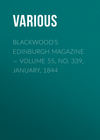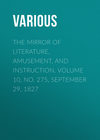Loe raamatut: «Notes and Queries, Number 55, November 16, 1850», lehekülg 4
S.P.H.T.
REPLIES
THE BLACK ROOD OF SCOTLAND
(Vol. ii., p. 308.)
I am not aware of any record in which mention of this relique occurs before the time of St. Margaret. It seems very probable that the venerated crucifix which was so termed was one of the treasures which descended with the crown of the Anglo-Saxon kings. When the princess Margaret, with her brother Edgar, the lawful heir to the throne of St. Edward the Confessor, fled into Scotland, after the victory of William, she carried this cross with her amongst her other treasures. Aelred of Rievaulx (ap. Twysd. 350.) gives a reason why it was so highly valued, and some description of the rood itself:
"Est autem crux illa longitudinem habens palmæ de auro purissimo mirabili opere fabricats, quæ in modum techæ clauditur et aperitur. Cernitur in ea quædarn Dominicæ crucis portio, (sicut sæpe multorum miraculorum argumento probatum est). Salvatoris nostri ymaginem habens de ebore densissime sculptam et aureis distinctionibus mirabiliter decoratam."
St. Margaret appears to have destined it for the abbey which she and her royal husband, Malcolm III., founded at Dunfermline in honour of the Holy Trinity: and this cross seems to have engaged her last thoughts for her confessor relates that, when dying, she caused it to be brought to her, and that she embraced, and gazed steadfastly upon it, until her soul passed from time to eternity. Upon her death (16th Nov., 1093), the Black Rood was deposited upon the altar of Dunfermline Abbey, where St. Margaret was interred.
The next mention of it that I have been enabled to make note of, occurs in 1292, in the Catalogue of Scottish Muniments which were received within the Castle of Edinburgh, in the presence of the Abbots of Dunfermline and Holy Rood, and the Commissioners of Edward I., on the 23rd August in that year, and were conveyed to Berwick-upon-Tweed. Under the head
"Omnia ista inventa fuerunt in quadam cista in Dormitorio S. Crucis, et ibidem reposita prædictos Abbates et altos, sub ecrum sigillis."
we find
"Unum scrinium argenteum deauratum, in quo reponitur crux quo vocatur la blake rode."—Robertson's Index, Introd. xiii.
It does not appear that any such fatality was ascribed to this relique as that which the Scots attributed to the possession of the famous stone on which their kings were crowned, or it might be conjectured that when Edward I. brought "the fatal seat" from Scone to Westminster, he brought the Black Rood of Scotland too. That amiable and pleasing historian, Miss Strickland, has stated that the English viewed the possession of this relique by the Scottish kings with jealousy; that it was seized upon by Edward I., but restored on the treaty of peace in 1327. This statement is erroneous; the rood having been mistaken for the stone, which, by the way, as your readers know, was never restored.
We next find it in the possession of King David Bruce, who lost this treasured relique, with his own liberty, at the battle of Durham (18th Oct., 1346), and from that time the monks of Durham became its possessors. In the Description of the Ancient Monuments, Rites, and Customs of the Abbey Church of Durham, as they existed at the dissolution, which was written in 1593, and was published by Davies in 1672, and subsequently by the Surtees Society, we find it described as
"A most faire roode or picture of our Saviour, in silver, called the Black Roode of Scotland, brought out of Holy Rood House, by King David Bruce … with the picture of Our Lady on the one side of our Saviour, and St. John's on the other side, very richly wrought in silver, all three having crownes of pure beaten gold of goldsmith's work, with a device or rest to take them off or on."
The writer then describes the "fine wainscote work" to which this costly "rood and pictures" were fastened on a pillar at the east end of the southern aisle of the quire. And in a subsequent chapter (p. 21. of Surtees Soc. volume) we have an account of the cross miraculously received by David I. (whom the writer confounds with the King David Bruce captured at the battle of Durham, notwithstanding that his Auntient Memorial professes to be "collected forthe of the best antiquaries"), and in honour of which he founded Holy Rood Abbey in 1128 from which account it clearly appears that this cross was distinct from the Black Rood of Scotland. For the writer, after stating that this miraculous cross had been brought from Holy Rood House by the king, as a "most fortunate relique," says:
"He lost the said crosse, which was taiken upon him, and many other most wourthie and excellent jewells … which all weare offred up at the shryne of Saint Cuthbert, together with the Blacke Rude of Scotland (so termed), with Mary and John, maid of silver, being, as yt were, smoked all over, which was placed and sett up most exactlie in the pillar next St. Cuthbert's shrine," &c.
In the description written in 1593, as printed, the size of the Black Rood is not mentioned; but in Sanderson's Antiquities of Durham, in which he follows that description, but with many variations and omissions, he says (p. 22.), in mentioning the Black Rood of Scotland, with the images, as above described,—
"Which rood and pictures were all three very richly wrought in silver, and were all smoked blacke over, being large pictures of a yard or five quarters long, and on every one of their leads a crown of pure beaten gold," &c.
I have one more (too brief) notice of this famous rood. It occurs in the list of reliques preserved in the Feretory of St. Cuthhert, under the care of the shrine-keeper, which was drawn up in 1383 by Richard de Sedbrok, and is as follows:
"A black crosse, called the Black Rode of Scotland."—MS. Dunelm., B. ii. 35.
Strange to say, Mr. Raine, in his St. Cuthbert, p. 108., appears to confound the cross brought from Holy Rood House, and in honour of which it was founded, with the Black Rood of Scotland. He was misled, no doubt, by the statement in the passage above extracted from the Ancient Monuments, that this cross was brought out of Holy Rood House.
I fear that the fact that it was formed of silver and gold, gives little reason to hope that this historical relique escaped destruction when it came into the hands of King Henry's church robbers. Its sanctity may, indeed, have induced the monks to send it with some other reliques to a place of refuge on the Continent, until the tyranny should be overpast; but there is not any tradition at Durham, that I am aware of, to throw light on the concluding Query of your correspondent P.A.F., as to "what became of the 'Holy Cross,' or 'Black Rood,' at the dissolution of Durham Priory?"
That the Black Rood of Scotland, and the Cross of Holy Rood House were distinct, there can, I think, be no doubt. The cross mentioned by Aelred is not mentioned as the "Black Rood:" probably it acquired this designation after his time. But Fordoun, in the Scoti-Chronicon, Lord Hailes in his Annals, and other historians, have taken Aelred's account as referring to the Black Rood of Scotland. Whether it had been brought from Dunfermline to Edinburgh before Edward's campaign, and remained thenceforth deposited in Holy Rood Abbey, does not appear: but it is probable that a relique to which the sovereigns of Scotland attached so much veneration was kept at the latter place.
W.S.G.
Newcastle-upon-Tyne, Nov. 2. 1850.
REPLIES TO MINOR QUERIES
Hæmony (Vol. ii., p. 88.).—MR. BASHAM will find some account of this plant under the slightly different type of "Hēmionion" in Pliny, xxv. 20., xvi. 25., xxvii. 17.:
"Invenit et Teucer eadem ætate Teucrion, quam quidam 'Hemionion' vocant, spargentem juncos tenues, folia parva, asperis locis nascentem, austero sapore, nunquam florentem: neque semen gignit. Medetur lienibus … Narrantque sues qui radicem ejus ederint sine splene inveniri.
"Singultus hemionium sedat.
"'Asplenon' sunt qui hemionion vocant foliis trientalibus multis, radice limosa, cavernosa, sicut filicis, candida, hirsuta: nec caulem, nec florem, nec semen habet. Nascitur in petris parietibusque opacis, humidis."
According to Hardouin's note, p. 3777., it is the Ceterach of the shops, or rather Citrach; a great favourite of the mules, ‛ημιονοι, witness Theophrastus, Hist., ix. 19.
Ray found it "on the walls about Bristol, and the stones at St. Vincent's rock." He calls it "Spleenwort" and "Miltwaste." Catalog. Plant. p. 31. Lond. 1677.
I have a copy of Henri du Puy's "original" Comus, but do not recollect his noticing the plant.
G.M.
Guernsey.
Byron's Birthplace.—Can any of your correspondents give any information relative to the house in which Lord Byron was born? His biographers state that it was in Holles Street, but do not mention the number.
C.B.W.
Edgbaston.
[Our correspondent will find, on referring to Mr. Cunningham's Handbook of London, that "Byron was born at No. 24. Holles Street, and christened in the small parish church of St. Marylebone."]
Ancient Tiles (Vol. i., p. 173.).—The device of two birds perched back to back on the twigs of a branch that rises between them, is found, not on tiles only, but in wood carving; as at Exeter Cathedral, on two of the Misereres in the choir, and on the gates which separate the choir from the aisles, and these again from the nave.
J.W.H.
Modena Family (Vol. ii., p. 266.).—Victor Amadeus III., King of Sardinia, died in October, 1796. Mary Beatrice, Duchess of Modena, mother of the present Duke of Modena, was the daughter of Victor Emmanuel V., King of Sardinia, who abdicated his throne in 1821, and died 10th January, 1824. The present Duke of Modena is the direct heir of the house of Stuart in the following line:—
All the legitimate issue of Charles II. and James II. being extinct, we fall back upon Henrietta Maria, youngest child of Charles I. She married her cousin Philip, Duke of Orleans, brother of Louis XIV., and by him had three children. Two died without issue: the youngest, Anna Maria, b. Aug. 1669, mar. Victor Amadeus II., Duke of Savoy, and had by him three children, one son and two daughters.
The son, Charles Emmanuel III., Duke of Savoy, married and had Victor Amadeus III., who married Maria Antoinette of Spain, and had:—1. Charles Emmanuel IV., who died without issue, and 2. Victor Emmanuel V., who married an Austrian Archduchess; his eldest daughter married Francis IV. Duke of Modena. She died between A.D. 1841-1846, I believe, and left four children:—1. Francis V., Duke of Modena. 2. The wife of Henri, Comte de Chambord. 3. Ferdinand. 4. Marie, wife of Don Juan, brother of the present de jure King of Spain, Carlos VI.
J.K.
Nicholas Breton's Fantasticks (Vol. ii., p. 375.).—In reply to the second Bibliographical Query of J. MT., Edinburgh, respecting Nicholas Breton's Fantasticks, I beg to inform him that my copy is perfect, and contains twenty-two leaves. The title is Fantasticks: seruing for a perpetuall Prognostication, with the subjects of the twenty-four Descants, as they are called, in prose, contained in the volume. 4to. bl. lett. London: Printed for Francis Williams, 1626. After this is a dedication "To the worshipfull and worthy knight Sir Marke Ive, of Rivers Hall, in Essex;" and a short address "To the Reader," one leaf. It is an entertaining work, and contains some curious and useful remarks on our ancient manners, customs, and habits. My copy had successively belonged to Garrick, Fillingham, and Heber; the latter of whom has written in it, "Who has ever seen another copy?"
T.C.
Strand.
Gaudentio di Lucca (Vol. ii., pp. 247. 298. 327.).—The Rev. Simon Berington, the author of The Memoirs of Gaudentio di Lucca, "of whom" MR. CROSSLEY (Vol. ii., p. 328.) "regrets that so little is known," was the fourth son of John Berington, of Winesley, co. Hereford, Esquire, by Elizabeth, daughter of Sir Thomas Wolrich, of Dudmaston, co. Salop, Bart. He was born 1679. He studied and took holy orders at Douay College.
W.L.
Nov. 3. 1850.
Weights for weighing Coins(Vol. ii., p. 326.).—I am able to supply H.E. with a reference to this subject of an earlier date than those he quotes. In the MS. Compotus or Accounts of Sibton Abbey, in Suffolk, in my possession, occurs the following item, under the year 1363-4:
"Et de ix d. pro ij paribus Balaunces pro aure ponderand'."
The following extract, although of later date than H.E. requires, may yet be not without its use to him in illustration of the subject. It occurs in the Compotus of a collegiate establishment at Mettingam, Suffolk, from an earlier volume of which some extracts were furnished to the Archæological Journal (vol. vi. p. 62.). It is as follows, under the year 1464:—
"Item in ponderibus pro novo aura ponderant' s' nobili xs. di. nobyl et quadrant' ejusdem cunagii et pro nobili de vjs. viijd. di. nobil et quadrant' et minoribus ponderibus utriusque cunagii cum le Scolys et Cophino pro eisdem. ijs. jd."
The new gold is of course the reduced coinage of Edward IV. I conclude that the nobles of 6s. 8d. were the same as the angels.
C.R.M.
Mrs. Partington (Vol. ii., p. 377.).—IGNORANS no doubt refers to the oft-repeated allusion to "Dame Partington and her mop;" and taking it for granted that he does so, I will enlighten him a little on the subject. The "original Mrs. Partington" was a respectable old lady, living, at Sidmouth in Devonshire; her cottage was on the beach, and during an awful storm (that, I think, of Nov. 1824, when some fifty or sixty ships were wrecked at Plymouth) the sea rose to such a height as every now and then to invade the old lady's place of domicile: in fact, almost every wave dashed in at the door. Mrs. Partington, with such help as she could command, with mops and brooms, as fast as the water entered the house, mopped it out again; until at length the waves had the mastery, and the dame was compelled to retire to an upper story of the house. I well recollect reading in the Devonshire newspapers of the time an account similar to the above: but the first allusion to the circumstance was, I think, made by Lord Brougham in his celebrated speech in the house of Commons on the Reform Bill, in which he compared the Conservative opposition to the bill to be like the opposition of "Dame Partington and her mop, who endeavoured to mop out the waves of the Atlantic."











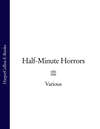

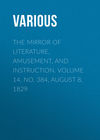

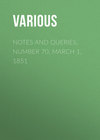
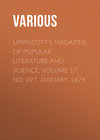
![Birds and Nature Vol. 11 No. 5 [May 1902]](https://cdn.litres.ru/pub/c/cover_100/25570807.jpg)
